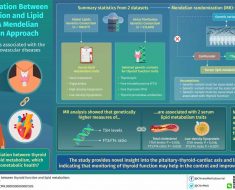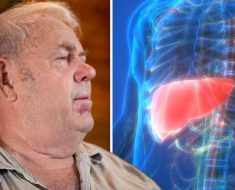
- A new study compared two dermatological treatments—microneedling and chemical peels—to see which works best for treating acne scars.
- The researchers focused on people with darker skin and randomly assigned them to receive one of the two treatments.
- The participants who received the microneedling treatment had the best results, as 73% of that group saw a marked improvement.
While some may consider acne a minor inconvenience of puberty, some people—in their teens and beyond—experience difficult cases of acne that can last a long time and even lead to scarring.
A study from Rutgers University, located in New Brunswick, NJ, examined dermatological treatments for acne scarring in patients with darker skin tones.
The study was published in The Journal of Clinical and Aesthetic Dermatology.
Certain types of acne may cause scarring
According to the American Academy of Dermatology Association (AAD), acne occurs when skin pores become clogged. This starts happening more during puberty when people experience a change in hormones, but acne can affect people of all ages.
There are many treatments for acne available. Some are over-the-counter (OTC) treatments, such as those containing salicylic acid or retinol. For people with more severe acne cases who do not find success with OTC treatments, there are prescription medications available, such as clascoterone or tretinoin.
While acne clears up for some people, others experience scarring. According to the AAD, some people are at a higher risk for developing acne scarring than others.
People who pop or squeeze their acne and do not treat their acne are at a higher risk for developing acne scars. Also, people who have cystic acne and nodular acne are prone to scarring.
Cystic acne penetrates the skin and causes pus-filled pimples, whereas nodular acne tends not to form a head. Scarring reportedly affects 30% of people with moderate to severe acne.
Sometimes hyperpigmentation occurs as a result of acne, which is when the skin appears darker after a pimple clears up. This is more common in people with darker skin.
Treatments for acne scarring
Acne scars fall into one of the following three categories:
- Atrophic (such as icepick scars, which appear as pinpricks on the face)
- Hypertrophic (which are raised and firm)
- Keloidal (reddish/purple scars that extend beyond the borders of the original wound)
Depending on the severity of the acne scarring, at-home treatments may help. Retinol serums may help minimize scarring and hyperpigmentation.
People who do not respond to OTC treatments may want to consult a dermatologist, who may prescribe a treatment such as a chemical peel or microneedling.
When a dermatologist performs a chemical peel, they apply a chemical solution to a person’s skin, and after waiting a set amount of time, they peel it away. In addition to helping with acne and scarring, it can help with signs of aging as it exfoliates the top layer of the skin.
Dr. Michelle Tarbox, associate professor of dermatology at Texas Tech University Health Sciences Center, spoke about the microneedling process during a University of Utah Health podcast. With microneedling, doctors puncture the skin with tiny needles as part of the treatment to stimulate collagen.
“Microneedling can be used to improve acne scars,” Dr. Tarbox commented. “It improves discoloration. It also improves some of the scarring that can be left behind after an inflammatory process.”
“And microneedling can be used to introduce different medications to the skin,” Dr. Tarbox continued. “It can also be used with platelet-rich plasma or used to help improve hair growth at home, so there are lots of options with microneedling.”
Glycolic acid peel vs. microneedling
During the Rutgers acne study, the researchers compared microneedling to a 35% glycolic acid chemical peel to see which worked best for acne scarring.
The researchers recruited 60 participants who had darker skin that was classified as IV, V, or VI on the Fitzpatrick Skin Phototype scale. They ranged from ages 15 to 50 and all had “clinically diagnosed scars” from acne.
People who had active acne cases, diabetes, or HIV infections were excluded from the study.
The participants were randomly placed in Group A (the microneedling group) or Group B (the chemical peel group). Both groups received treatments every 2 weeks for the course of 12 weeks.
After the 12-week treatment plan was over, the scientists waited for two weeks and then brought in the participants to judge how effective their treatments were.
The best scar treatment
Microneedling outperformed chemical peels in this study.
After analyzing each participant’s treated areas against the Goodman and Baron Scarring Grading System, the researchers found that 73% of microneedling participants improved at least two points compared to only 33% of chemical peel participants.
“Based on the results of this study, patients whose darker skin precludes the use of stronger chemical peels, which can permanently discolor darker skin, should treat acne scars with microneedling,” says Dr. Babar Rao, the senior author of the study. “For patients with lighter skin who can use stronger peels without risk of discoloration, chemical peels might still be the best option for some.”
Dr. Rao is a professor of dermatology and pathology at the Rutgers Robert Wood Johnson Medical School.
Treating scarring on darker skin tones
Dr. Geeta Yadav, a board certified dermatologist and founder of FACET Dermatology, spoke with Medical News Today about the study findings.
“Acne scarring tends to be more prominent in those with darker skin tones due to the heightened risk of hyperpigmentation after skin trauma,” Dr. Yadav explained.
“Professional microneedling is one of the few in-office procedures that effectively addresses scarring in darker skin tones, and it’s logical that the microneedling patients observed in this study exhibited a greater improvement,” Dr. Yadav commented.
Dr. Yadav described the 35% glycolic acid peel as being “superficial” and said she “was not surprised the results weren’t as robust as the group that received microneedling.”
Other treatments for hyperpigmentation
Dr. Yadav also discussed other treatments for acne scarring in people with darker skin tones.
“Beyond microneedling (or microneedling enhanced with radiofrequency), treatments for acne scarring in deeper skin tones can also include resurfacing fractional ablative lasers,” said Dr. Yadav. “This has to be done with adequate pre and post-care to reduce the risk of hyperpigmentation.”
“All these energy and mechanical-based treatments can be bolstered by the topical application of vitamin C,” commented Dr. Yadav.
“Vitamin C promotes collagen production, which helps smooth the appearance of scarring, as well as blocking the production of tyrosinase, the enzyme that produces melanin. Considering vitamin C is also a potent antioxidant, that makes it a comprehensive treatment option for supporting healthier-looking skin with a more even texture and tone.”
— Dr. Geeta Yadav
Source: Read Full Article





